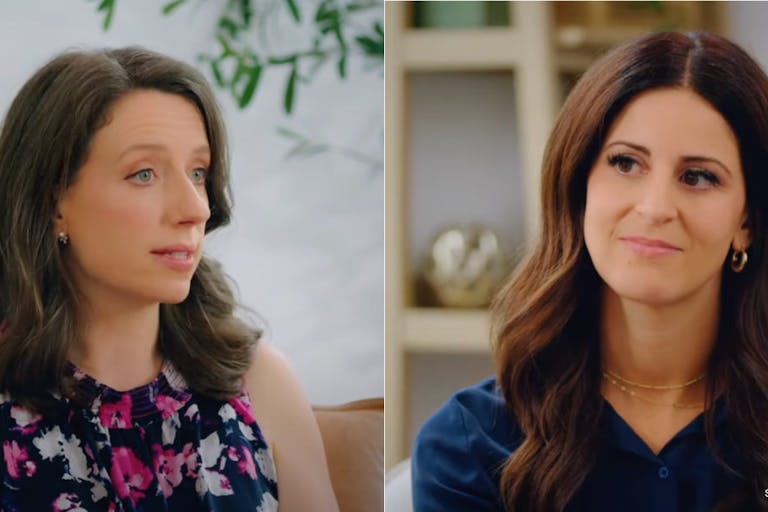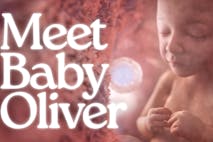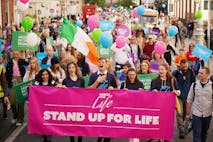
Details shrouded in secrecy as third woman in a month is injured at Rhode Island Planned Parenthood
Bridget Sielicki
·
Live Action Exclusive: Stephanie Gray Connors tackles common pro-abortion arguments
Live Action’s founder and president Lila Rose recently sat down for a conversation with pro-life apologist and author, Stephanie Gray Connors. In this Live Action Exclusive, the two discussed how to tackle some of the most common pro-abortion arguments with clarity and compassion.
Rose and Gray Connor worked through some of the most common pro-life arguments — and how to graciously yet succinctly respond to those arguments.
They touched on topics like fetal personhood, the “violinist argument,” life of the mother cases, and situations of rape and incest.

A seasoned debater, Gray Connors spoke with Rose about the need for changing hearts in minds in the fight to end abortion. She noted that the approach is not just to make the best case, but to do so in a winsome, kind, and gracious manner.
She and Rose then walked through some of the most common pro-abortion arguments — with Rose playing the “devil’s advocate” and presenting those pro-abortion arguments — in order to demonstrate to viewers how to make a winsome case for life.
Gray Connors said when she is presented with the pro-abortion argument that the fetus isn’t a person, she takes a conversational approach.
“I always ask the question: how do you define a person? What is a person?”
Ultimately, after a period of back and forth, the debater says that the fetus is not yet a person because he/she hasn’t had time to develop yet. Time is a phrase Gray Connors hones in on.
“Should our personhood be grounded in or defined by how old we are, or what we are?” she asks.
Gray Connors responded, “The important distinction here is what is a part versus what is a whole. So a sperm and an egg by themselves are human parts equivalent to my arm or my leg or a skin cell. And if you take a sperm by itself and put it in my uterus, it’s not going to grow and mature through the stages of human development.”
She pointed out that people can trace their existence all the way back to an embryo — but no further.
“I can’t claim my origins to a sperm or an egg by itself, but I can claim that who I am today is physiologically… the same as the one-celled embryo.”
Rose offered the well-known violinist argument, in which a person is hypothetically forced to give life support to a world famous violinist — which is equated to a mother giving life support to her preborn child.
Gray Connors contends that in the scenario, the violinist on life support would not have the right to use a stranger’s body to survive, but there is a key difference between the child in the mother’s body.
Article continues below
Dear Reader,
In 2026, Live Action is heading straight where the battle is fiercest: college campuses.
We have a bold initiative to establish 100 Live Action campus chapters within the next year, and your partnership will make it a success!
Your support today will help train and equip young leaders, bring Live Action’s educational content into academic environments, host on-campus events and debates, and empower students to challenge the pro-abortion status quo with truth and compassion.
Invest in pro-life grassroots outreach and cultural formation with your DOUBLED year-end gift!
“What is the nature and purpose of the uterus?” she said. “And the nature and purpose of the uterus is that it is an organ in my body different from all my other body parts in that it exists more for my offspring than it does for me… And so therefore you can say that the offspring of you have a right to your uterus in the way a stranger doesn’t have a right to be plugged into your body.”
Parents, by their very nature, have a responsibility to care for their children. And so, she says, “maintaining a pregnancy is meeting the basic needs of your child at that stage in their development. It’s not above and beyond the call of duty.”
“We treat them both equally. We say both are valuable. Both are unrepeatable and irreplaceable. And it would be wrong to directly and intentionally kill either,” Gray Connors said.
Though preterm delivery may sometimes be necessary — and may result in the unintentional death of the preborn child too premature to survive — she advocates for medical professionals to recognize and remember that they are treating two humans, not just one, and to do everything they can to save both the mother and baby.
“There may be times when we can’t save the baby, but that’s very different from directly killing the baby or doing something to the woman that is not yet justified because the pathology actually isn’t present yet, or whatever the case may be,” she said.
In this terrible situation, it’s important to first acknowledge that a horrific evil has occurred.
But, Gray Connors notes, “If she’s already pregnant, the child has to come out of her body eventually, one way or another. So, what is the most ethical? Bringing the child out dead or alive? Since the child is alive, the most ethical thing would be birth.”
She notes that rape is a trauma, but the killing of the preborn child is also a trauma.
“Directly killing one child is going to not only end that child’s life, but I would argue cause untold harm to the mother of the child,” she says.
Watch the entire video to see Gray Connors respond to other common pro-abortion arguments.
Follow Live Action News on Facebook and Instagram for more pro-life news.
Live Action News is pro-life news and commentary from a pro-life perspective.
Contact editor@liveaction.org for questions, corrections, or if you are seeking permission to reprint any Live Action News content.
Guest Articles: To submit a guest article to Live Action News, email editor@liveaction.org with an attached Word document of 800-1000 words. Please also attach any photos relevant to your submission if applicable. If your submission is accepted for publication, you will be notified within three weeks. Guest articles are not compensated (see our Open License Agreement). Thank you for your interest in Live Action News!

Bridget Sielicki
·
Media
Cassy Cooke
·
Media
Cassy Cooke
·
Human Interest
Kelli Keane
·
Analysis
Sheena Rodriguez
·
Analysis
Cassy Cooke
·
Issues
Bridget Sielicki
·
Human Interest
Bridget Sielicki
·
Politics
Bridget Sielicki
·
Politics
Bridget Sielicki
·
International
Bridget Sielicki
·